Mt. Haguro (jp: Hagurosan 羽黒山)
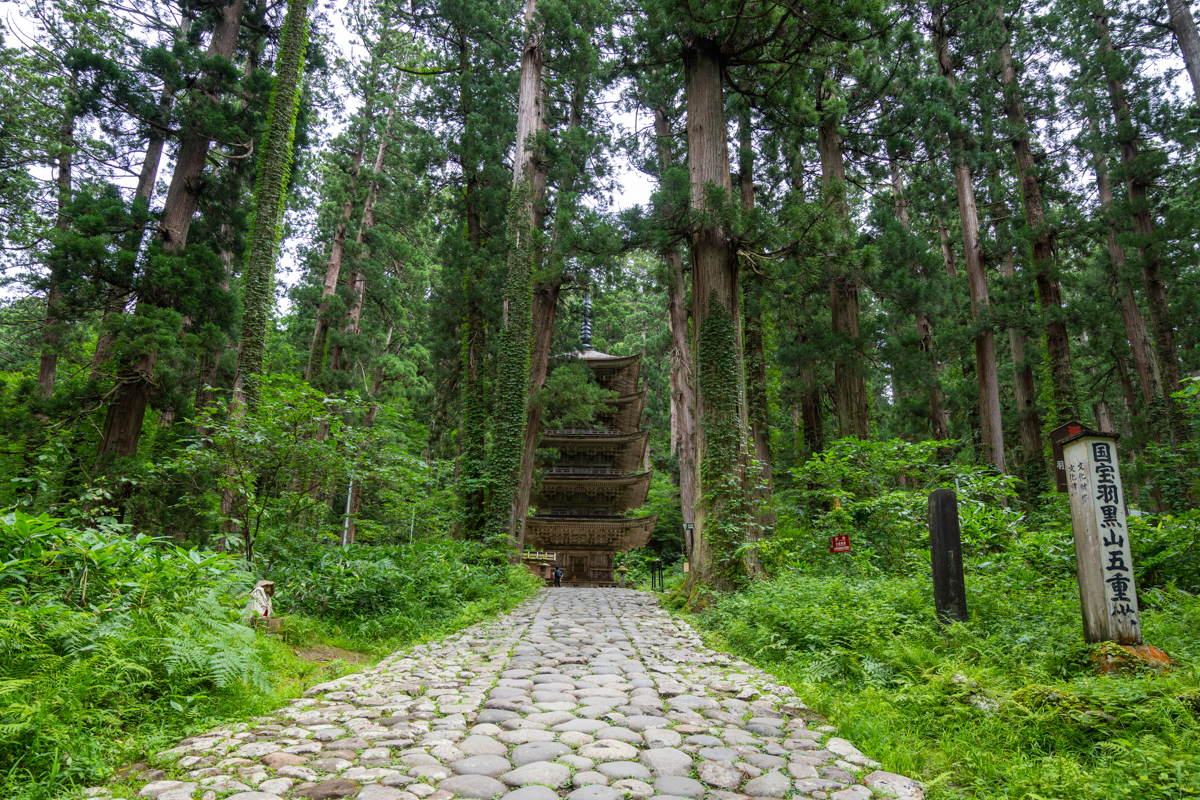
Hiking season: Open year-round
Mount Haguro is the principal mountain of the Dewa Sanzan, consecrated in 593 by Nojo Taishi 能除太子 (also known as Prince Hachiko). Known as the “mountain of the present,” it is where pilgrims offer prayers for their current life and aspirations. Traditionally, Mount Haguro is the first mountain climbed in the Dewa Sanzan Pilgrimage.
Of the three sacred mountains, it is the only one open year-round. At its forested peak stands the Dewa Sanzan Shrine, which enshrines the deities of all three mountains. The path leading to the summit consists of a 2,446-step stone stairway, lined with towering cedar trees. While the trail can be explored independently, those who hike with a yamabushi guide will find the experience even more profound.
As the lowest in elevation and the closest to Tsuruoka City, Mount Haguro is also the most accessible of the Dewa Sanzan mountains, reachable by both public transportation and car. At the mountain’s base lies Toge, a town home to numerous shukubo pilgrim lodges run by yamabushi and their families. These lodges offer overnight accommodations to both religious pilgrims and general visitors.
The enshrines deities of Mt. Haguro are explained in the shrine informaiton below.
| Deity name | Associated religion | Divine attributes |
| Ukanomitama (ウカノミタマ) | Shinto | Deity of cereals and crops |
| Kanzeon Bosatsu (観世音菩薩, Avalokiteśvara) | Buddhism | Bodhisattva of Compassion |
What Do We Know About Prince Hachiko?
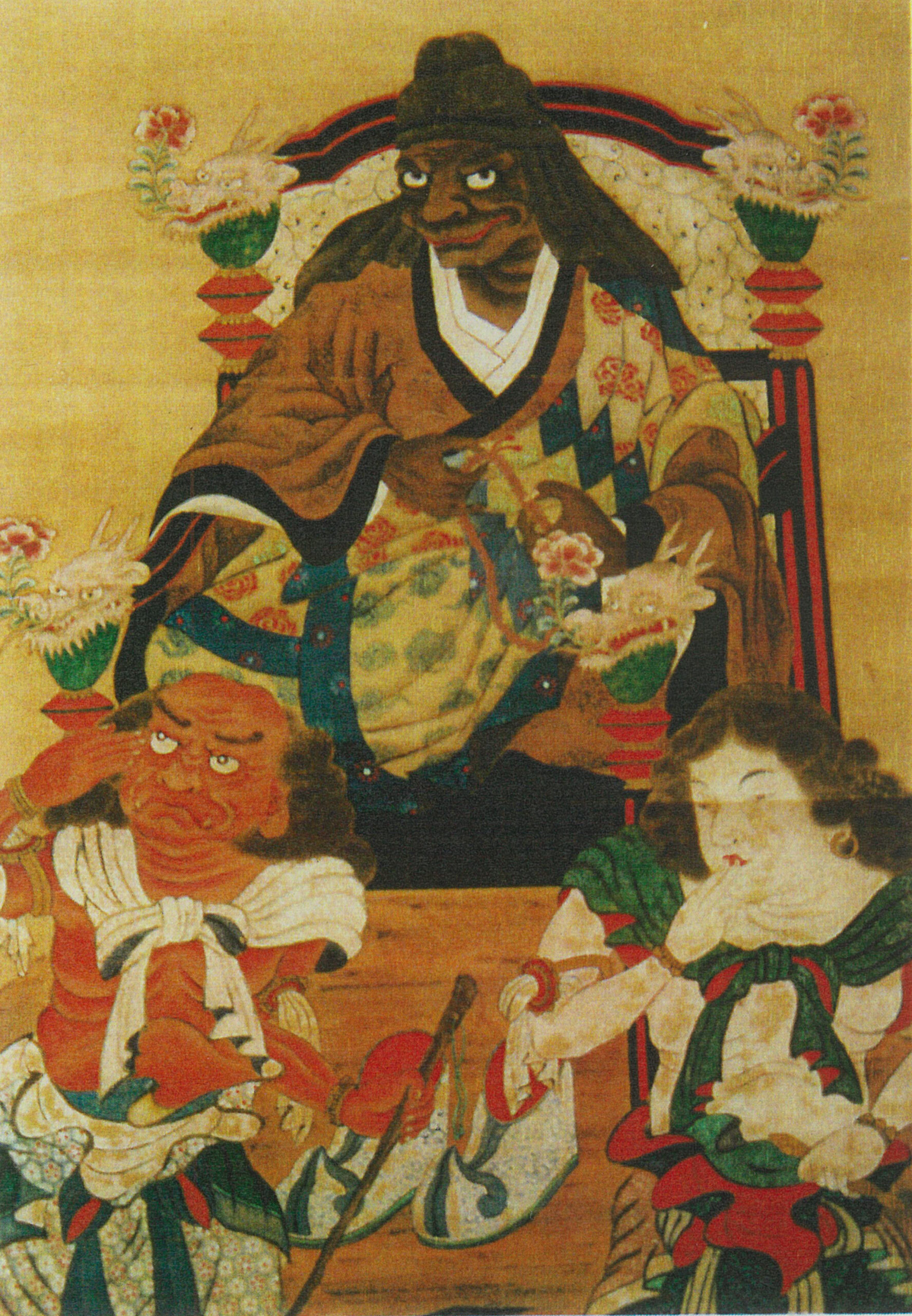
Prince Hachiko (蜂子皇子) was born in 542. His father, Emperor Sushun (崇峻天皇), was assassinated in 592 by a jealous rival named Soga no Umako (蘇我馬子). Following the advice of his cousin, Hachiko decided to flee the capital in search of a sacred Buddhist mountain where he could pray for an end to the world’s suffering. This mountain was said to be in the “Land of Dewa.”
As he embarked on his long journey, he encountered many people in distress. Using his mystical powers, Hachiko “absorbed” their pain, healing them of their illnesses and suffering. However, in doing so, his physical appearance became distorted and grotesque, warping his facial features into something monstrous. Despite his frightening appearance, Prince Hachiko was known for his boundless compassion and kindness—almost like a saint.
Guided by a three-legged crow, believed to be a messenger from the gods, the prince eventually discovered Mount Haguro and designated it a sacred Buddhist site in 593.
Points of interest
Zuishinmon Gate 随神門
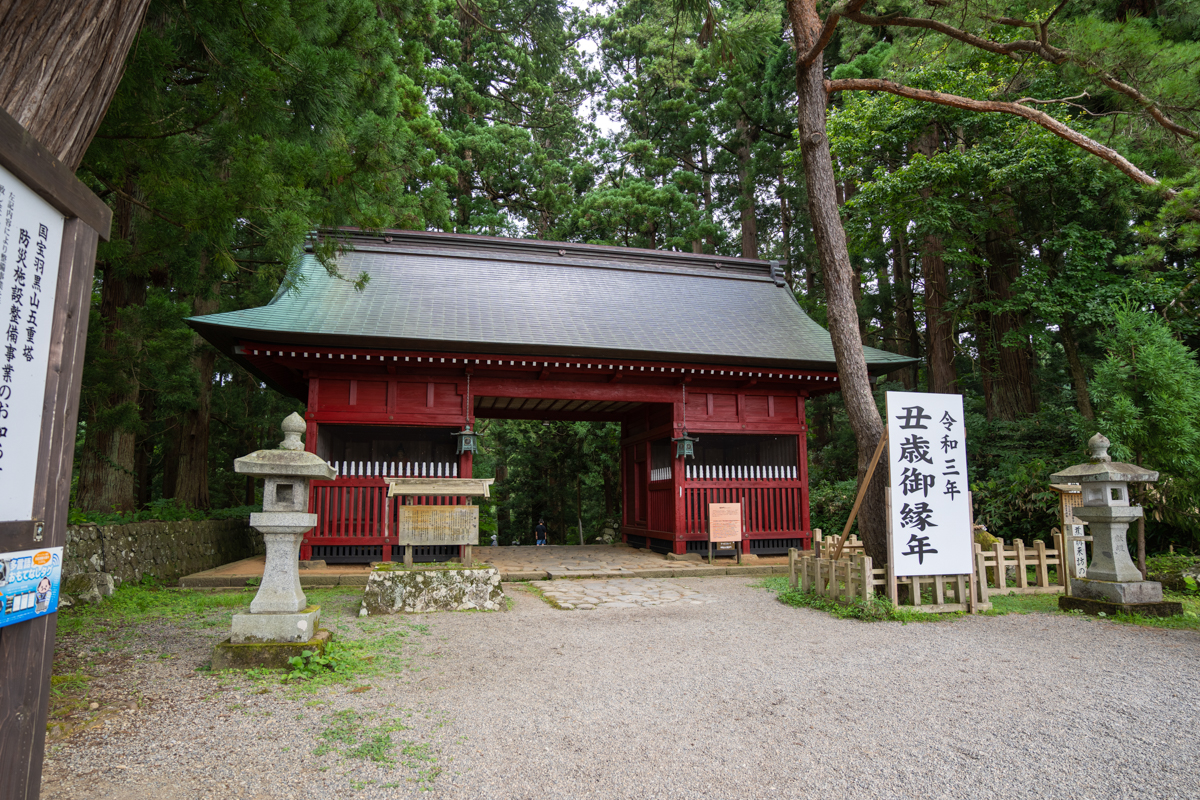
The Zuishinmon Gate is the symbolic entrance to the sacred realm of Mount Haguro, and the definitive starting point of the stone-stair pilgrimage path leading to the peak. This striking red gate was originally a niomon, a Buddhist gate housing the protective deities known as nio. Its name changed to Zuishinmon following the shinbutsubunri proclamation (the enforcement of religious segregation between Shinto and Buddhism) in the late nineteenth century.
The 2,446 Stone Steps of Mt. Haguro (jp: Ishidan 石段)
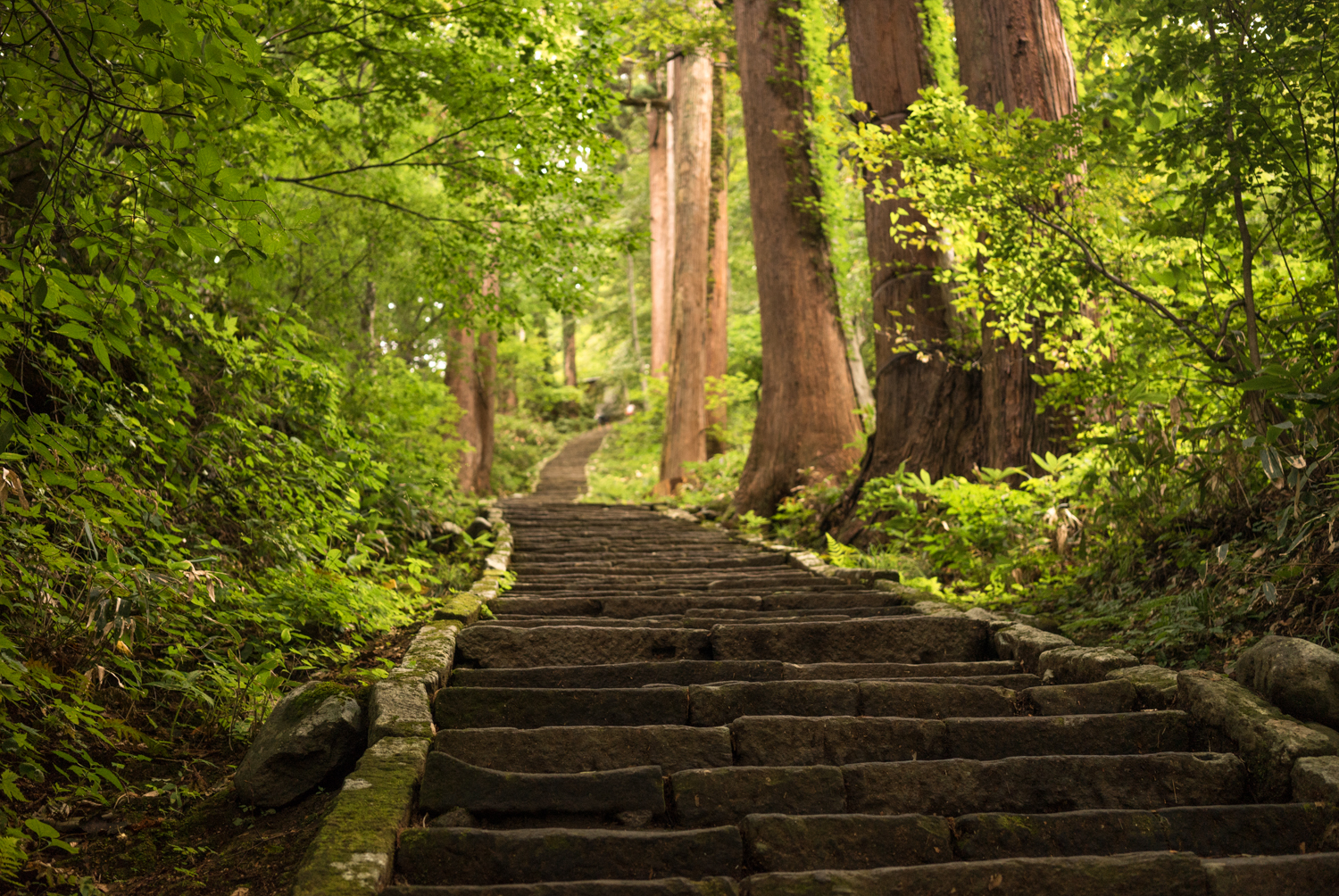
The 1.7 km path to the top of Mt. Haguro is a stone-paved trail originally completed in the 1600s under the direction of the 50th chief priest of the Dewa Sanzan. Lined with towering Japanese cedar trees and sacred sites, this historic route offers a deeply immersive experience.
The path is suitable for individuals in good health, including both adults and children, and takes approximately 60 to 90 minutes to complete.
For those unable to hike the full length, many of the primary sites at the base of the mountain, such as the Haraigawa River and the Five-Storied Pagoda, are still accessible. However, visitors should note that reaching these sites requires descending and climbing stairs at the beginning of the trail.
The Five Storied Pagoda of Mt. Haguro (jp: Hagurosan Gojunoto 羽黒山五重塔)

Originally constructed during the Heinan Period between 931 and 937, the current Five Storied Pagoda was rebuilt in 1369 after a fire razed the original structure. Standing 29 meters tall with an unvarnished wood structure designed to blend in with the surrounding nature, this pagoda was designated as a National Treasure of Japan in 1966.
This structure originally housed Mt. Haguro’s bodhisattvas (Shôkannon 聖観音, Kundali 軍荼利, and Myôken 妙見). These buddha were removed in the mid 1800s during the Meiji government order for the Dewa Sanzan to convert to Shintoism and replaced with statues of the Shinto god of commerce: Okuninushi no Mikoto (大国主命).
The Dewa Sanzan Shrine (jp: Dewasanzan-jinja 出羽三山神社)
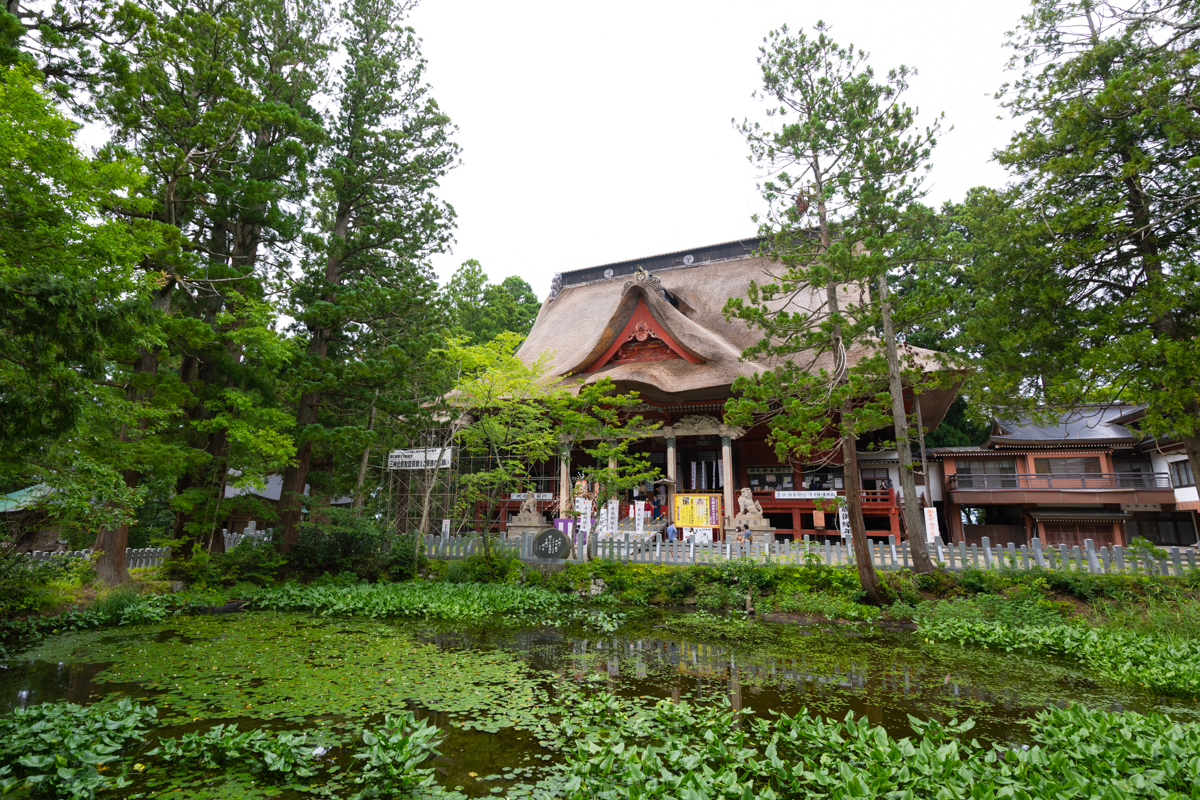
At the peak of Mt. Haguro stands the grand Dewa Sanzan Shrine. The Gosaiden main hall boasts the largest thatched roof in Japan and enshrines the deities of all three mountains, allowing them to be worshipped year-round. Kito prayer and blessing rites are held every hour. No reservations are necessary—those interested in participating can register and pay the fee at the shrine’s administrative hall.
Adjacent to the main hall is a more modest structure known as Hachiko Shrine (蜂子神社), where Prince Hachiko, the founder of the Dewa Sanzan Shrine, is honored.
Kagami-ike Pond 鏡池
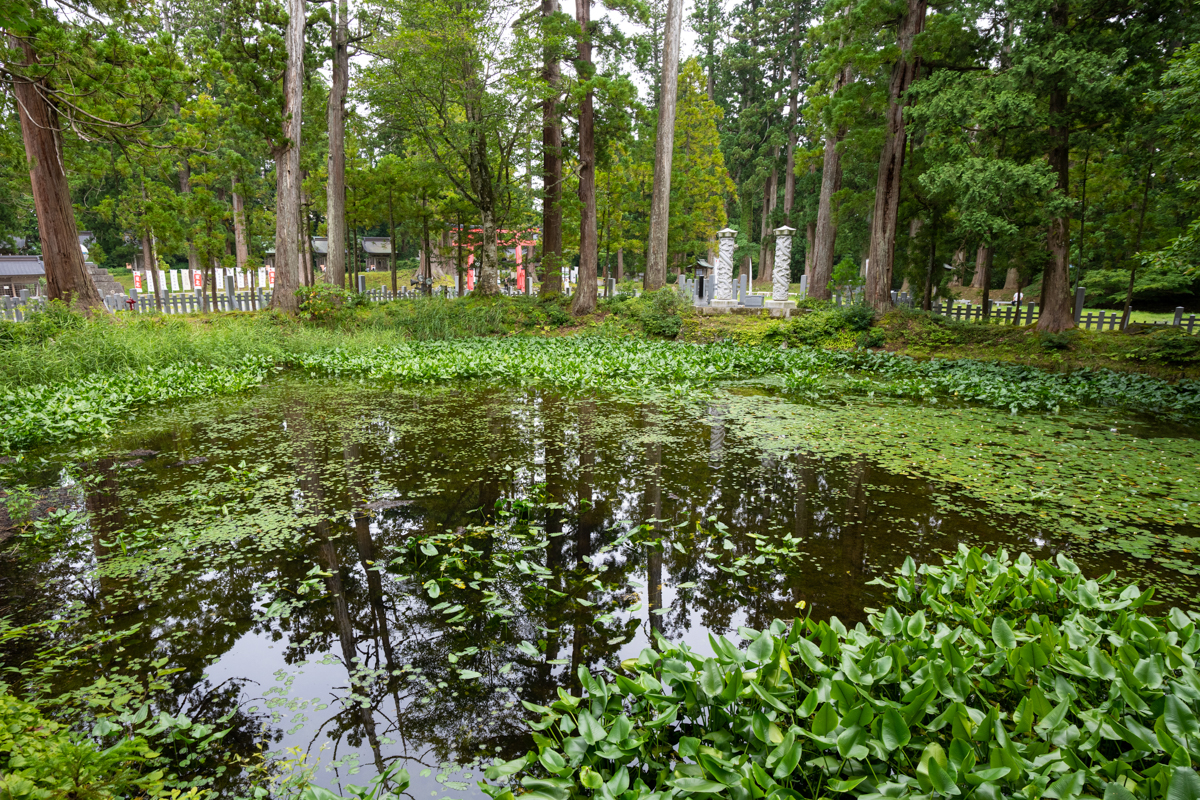
In front of the Dewa Sanzan Shrine’s prayer halls lies Kagami-ike (lit. “Mirror Pond”) named after the practice in ancient times of throwing one’s bronze mirror (an expensive and treasured commodity in those days) into the pond as an act of supplication. The pond is also popular among wildlife enthusiasts, as a hatching ground for moriaogaeru frogs. Sometimes called Kinugasa flying frogs in English, the frogs lay their eggs in tree branches overhanging the pond. Photographers flock here every summer, attempting to capture on film the moment the eggs mature and plop into the pond.
Saikan 斎館
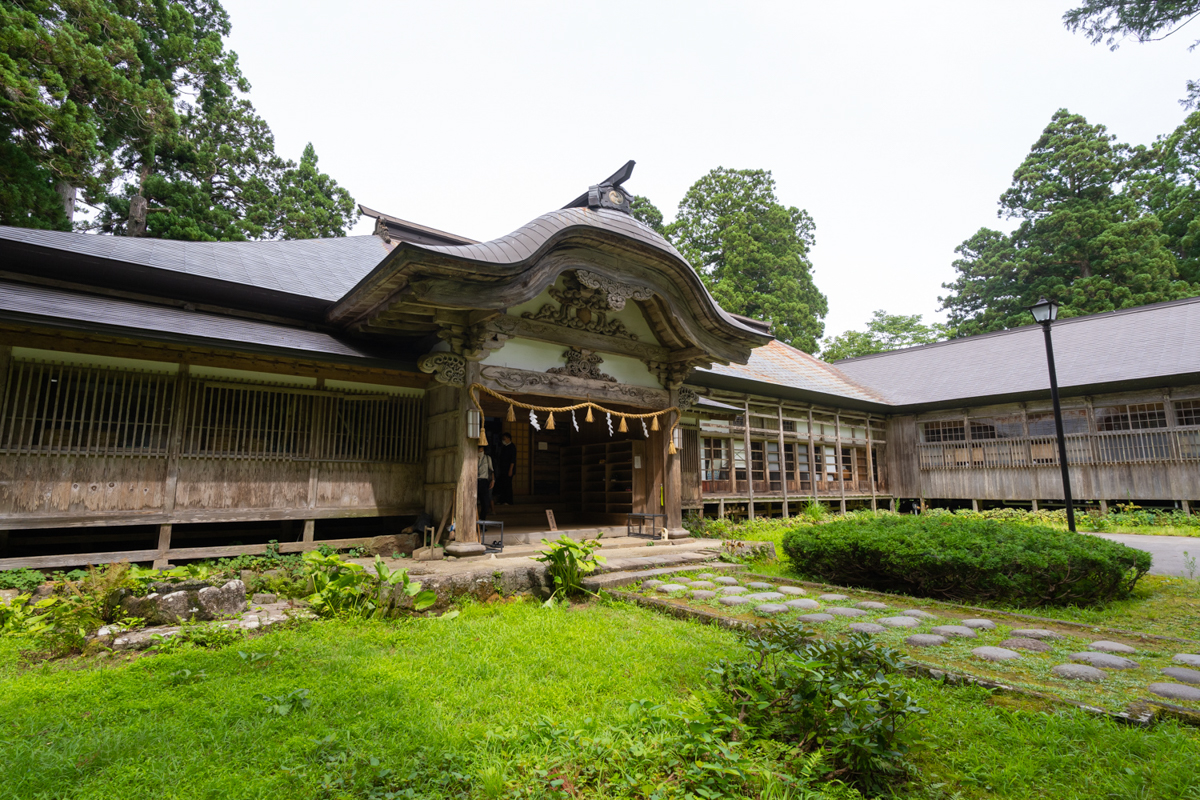
As you ascend the stone steps of Mt. Haguro, you will come across Saikan, located on your left just before reaching the summit. This historic building was once Kezo-in Temple, one of the three temples where high-ranking Yamabushi would undergo purification rituals.
Originally constructed in the Momoyama period (late 16th century), its entrance was relocated to its current position during the Meiji era (1868–1912) when Shinto and Buddhism were officially separated. Today, guests can enjoy the shojin ryori of the Dewa Sanzan for lunch (with advanced reservations) and even lodge at this facility.
Access
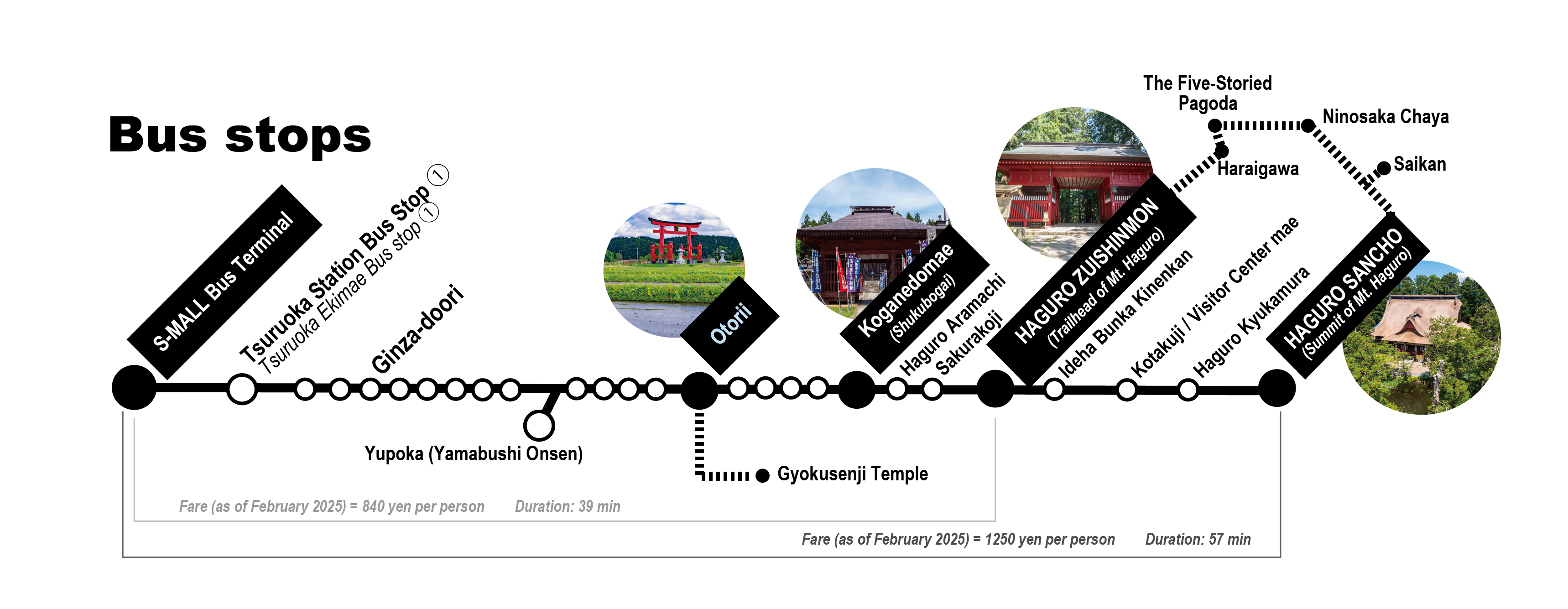
Bus Timetable
Click here for the bus schedule.
Important Reminder:
- If you wish to see the Five-Storied Pagoda, climb the 2,446 stone steps to the top, or explore the base of Mt. Haguro, please get off at Haguro Zuishinmon.
- If you prefer to go directly to the summit of Mt. Haguro, please get off at Haguro Sancho.
Practical Tips:
- Do not wear high heels or unsuitable footwear when hiking Mt. Haguro.
- In winter, wear snowshoes or rain boots if planning to climb while snow remains on the trails.
- The Ideha Bunka Museum (located at the foot of Mt. Haguro) offers free rain boot rentals year-round.
- Coin lockers are available inside the Ideha Bunka Museum for storing bags while hiking; however, large suitcases may not fit in the lockers.
- Stay hydrated and take precautions to prevent heat stroke in summer (e.g., wear a sunhat, apply sunscreen).
- Apply insect repellent regularly to avoid mosquito bites.

